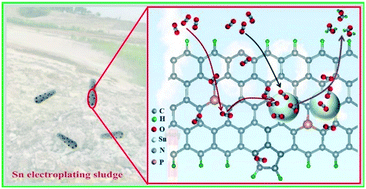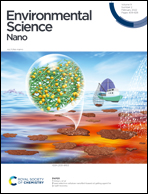Towards a broad-operation window for stable CO2 electroreduction to HCOOH by a design involving upcycling electroplating sludge-derived Sn@N/P-doped carbon†
Abstract
The electrochemical CO2 reduction reaction (CO2RR) to HCOOH offers a promising strategy for a carbon-neutral cycle. Sn-Based materials have been demonstrated as applicable in extensive studies of CO2RR to HCOOH, but great challenges still remain, including the weak CO2 adsorption and narrow potential window as well as low stability. Herein, we developed ultrasmall Sn nanoparticles inlaid on N/P-doped carbon (Sn@NPC) composites by an upcycling design using Sn electroplating sludge. The obtained Sn@NPC electrode exhibited a higher Faradaic efficiency of 87.93% for HCOOH at 1.05 V vs. RHE and an FE over 80% within a 500 mV broad potential window. Moreover, the Sn@NPC electrode achieved excellent long-term stability up to 105 h, which was superior to that of most Sn-based catalysts in similar systems. Density functional theory calculations demonstrated that Sn@NPC could enhance CO2 adsorption, which led to stronger *OCHO adsorption, weaker *HCOOH adsorption and faster electron/mass transport. This work may provide a promising lead for recycling metal from electroplating sludge and for the design of efficient and stable catalysts for the CO2RR.

- This article is part of the themed collection: SDG13: Climate Action- chemistry of greenhouse gases, 2022


 Please wait while we load your content...
Please wait while we load your content...